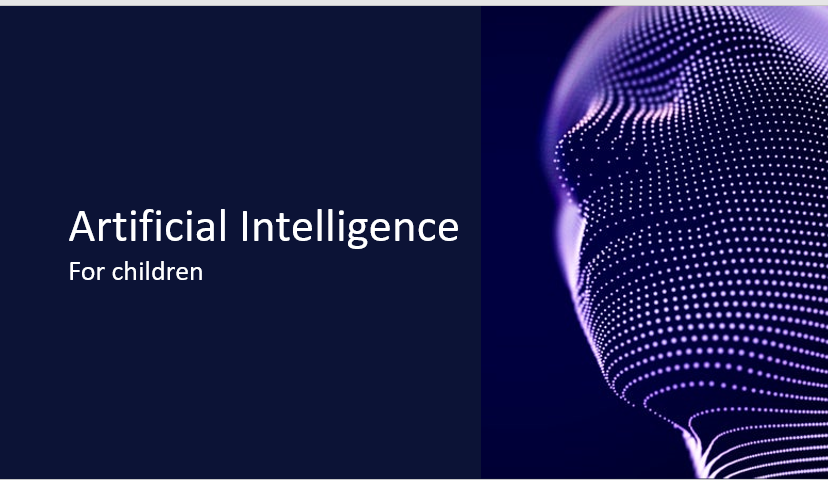Continued from Artificial Intelligence for Children Part 2
In the last article, we had seen the reasons for the sudden growth of AI and also looked at certain real life scenarios where AI is being used very effectively and how it is impacting our daily lives, directly or indirectly.
Now is the time when we can peek under the hood to see how Artificial Intelligence works. How Data Scientists and Data Engineers are working to extract intelligent insights out of data.
We will need to get a little technical here, but I will try to keep it simple.
So, as you will recollect from the last article, machine learning and deep learning algorithms are the new kids on the block and the advancement in these has really fuelled the growth of AI. Deep Learning is a subset of Machine Learning, so let’s begin with Machine Learning first.
Machine Learning actually represents multiple techniques that researchers have put together to analyze data and to extract insights.
We will first look at an example and later look at the big picture of what all types of techniques comprise of Machine Learning.
Say, I want to buy a house in Pune and I ask you how much you think I should pay for it. Now you don’t know the prices in Pune market. So, what will you do?
First you will ask me the location of the house, the size of the house that I am interested in and the name and reputation of the builder who has built the house. Then you will try to find the price of the houses in the neighbourhood. You can safely assume that the bigger the house the more expensive it would be.
So, you will try to see how the price of houses in this locality is changing with the size of the houses. You might also look for some other factors such as quality of construction or the facilities available in the complex offered by the builder and make adjustment to price of the house accordingly. There could be other factors to consider but you are a busy person and do not want to do more research at this stage. So, the calculation that you would be doing in your mind is –
Price of House = a x (Size of the House) +
Adjustment factor (say, b) for quality & amenities provided by the builder
Once you get information on 15-20 houses in the neighbourhood, you will start making a mental assessment of the values for ‘a’ and ‘b’ and then you will give me what you think is a reasonable value for the house that I want to buy.
As can be expected, more data you have on various houses in the neighbourhood, better your estimate for my house would be.
Now, if we look at Machine Learning, it follows a similar approach to solve such a problem. A Machine Learning problem sees ‘data’ and starts inferring the pattern (or the equation) that will give value of the unknown. In this problem, data is the prices of houses in the neighbourhood and how the prices are impacted by the size of the house and by the quality and amenities offered by the builder.
Note that ‘Size of the House’ and ‘Quality & Amenities provided by the builder’ are independent variables (or predictor variables) here and ‘Price of the House’ is a dependent variable (predicted variable).
A typical machine learning problem would first try to understand the pattern from the data that is available. Once the pattern can be framed in some sort of equation (could be a linear function or a polynomial, could be in based on one or two predictor variables or could be even in 100s of predictor variables), we can use the function to determine the value of the predicted variable in new scenarios!
The advantage of machine learning is that unlike human mind which has a a limitation to process large quantities of data and determine patterns in large number of variables, computers just need the processing power to manage complexities of any level.
This problem solving approach is called ‘Supervised Learning”. This is one type of approach taking in Machine Learning. There are other approaches such as ‘Unsupervised Learning’, ‘Deep Learning’ and ‘Reinforcement Learning’. We will touch upon them later.
So, you might be thinking, what is the big deal about Machine Learning and Artificial Intelligence. Computers have been doing such calculations since the time they came into existence. What’s different?
The interesting part here is that normal computer programs expect that the programmer would give values for ‘a’, and ‘b’in the above equation and for any combination of predictor variables, the computer would quickly give the value of the predicted variable.
However, in Machine Learning, it is the other way round. The values of ‘a’ and ‘b’ are not known beforehand. Machine tries to find these values by looking at data and extracting patterns out of data and guessing the equation that can be used for future calculations.
Is this not how most of the real-world problems are? Whatever decision you have to take (e.g. on seeing a photo if you have to decide if it is a dog or a cat, you base your judgement on your previous experience of how dogs and cats look like and take a decision), you need some previous experience and based on the patterns that you have framed in your mind, you decide.
So, get ready to outsource your brain to the machines!
At ExperiHub, we teach through science experiments and believe that imparting education through Experiential Learning raises students’ scientific curiosity. We conduct science projects for better learning that activates the brain to develop the necessary skills needed to grasp concepts better.
For more science related videos : https://www.youtube.com/c/ExperiHub?sub_confirmation=1


